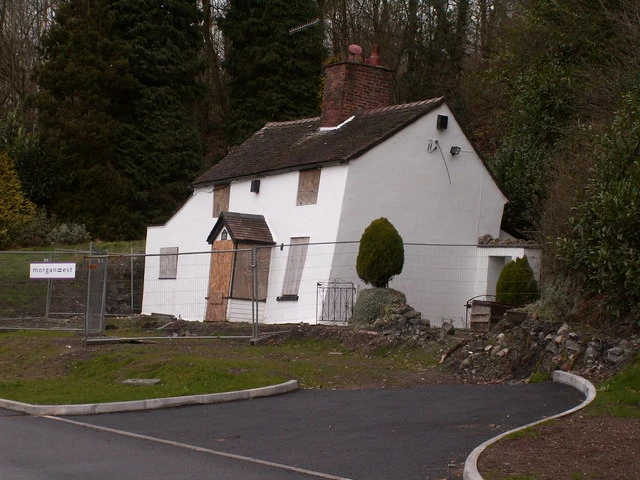20/08/2019 | Category: Home Insurance

When it comes to issues that can affect your home, subsidence is one of the more serious ones. It can have a negative impact on the structural safety of a property and its value.
Last year, after an uncharacteristically hot summer, subsidence claims reached their highest level since 2006. According to data from the Association of British Insurers (ABI), more than 10,000 homeowners made claims totalling £64 million to deal with the impact of subsidence in Q3 of 2018.
If your home has suffered from subsidence in the past or is at risk of it in the future, finding the right home insurance policy can be frustrating. But if you go to a specialist subsidence home insurance provider, getting insurance for a house with subsidence might not be as difficult as you might think.
What is subsidence?
Subsidence is when the supporting earth beneath your home moves, causing it to sink and become unstable. This puts strain on the building’s structure and creates cracks.
Subsidence should not be confused with:
· Settlement: which is when cracks appear in new buildings as the ground beneath adjusts to support the new weight upon it
· Heave: which is when the ground moves upwards, forcing some of the foundations with it
· Landslip or landslide: which is when land moves down a slope or is washed away taking part of the property or its foundations with it
Cracks in the interior and exterior walls of a building do not necessarily indicate subsidence. But if they grow to a width of 20mm or more they will need to be checked out and treated professionally. You will also need to inform your insurance provider.
Is subsidence covered by house insurance?
Most home insurance policies will cover any damage to your home caused by subsidence – but only if it has not happened before.
Generally speaking, a home insurance policy will cover the cost of repairing the loss or damage caused by subsidence but not the cost of preventing further damage. The main priority for the insurer is making the property safe and stable.
If your house has suffered from subsidence in the past, you may need to look for a specialist subsidence home insurance provider.

Should you buy a house with subsidence?
If you have found your dream house but it is showing signs of subsidence, should you buy it? This is a common situation, as many houses in the UK do show some signs of subsidence.
If you find yourself in this situation, you should always seek expert advice before proceeding with the purchase. A reputable chartered surveyor will be able to check the severity of the subsidence and advise you on any remedial work required.
Always have a full structural survey. Anything less than that may not pick up subsidence issues. If the resulting property survey includes words such as ‘long-standing and non-progressive’ that will mean only cosmetic work is required. If the subsidence is recent or ongoing, the surveyor can advise on the estimated cost of repairing the problem.
You should also speak with your insurance providers to discuss taking out specialist subsidence home insurance policy.
What happens if your house has subsidence?
Subsidence can happen for a number of reasons. Shrinking clay soil, drought prone areas, trees close to the foundations and leaking drains can all make your home more likely to experience subsidence.
When subsidence is caused by a tree sucking the moisture out of the ground under a house, this can be dealt with quickly by cutting the tree back – or removing it altogether.
However, it can take a long time to deal with some cases of subsidence as the cracks may need to be monitored for a year by the insurer before remedial work can be carried out. The process of underpinning (deepening the building’s foundations) can also take a long time to complete.
If you suspect your house may have subsidence, the first thing you should do is contact your building insurance provider. The sooner the issues are investigated, the sooner they can be put right.
If you fail to declare any issues, such as cracked or bulging walls or a history of subsidence, you may risk your home insurance policy being declared invalid.
Insurers will be focused on remedying damage that has already been done, so you may also want to contact a building surveyor to get some independent advice on what preventative work is required.
Do you have to declare subsidence when selling a house?
If you are planning to sell your home after it has suffered subsidence it can be tempting not to declare information that might put off potential buyers. However, honesty is always the best policy.
All sellers are required to complete an information form about the property which will ask for details of any building works which have been carried out (including underpinning or other subsidence remedial works).
The form will also ask whether existing home insurance is subject to a high amount of excess, if the premiums are particularly high, or if home insurance has ever been refused. If you fail to give the buyer accurate information and they later discover issues, you may face a claim for misrepresentation.
Getting the best deal on subsidence home insurance
Always check the extent of cover offered by a home insurance policy. Never assume something will be covered, and always check the small print and exclusions relating to subsidence. For example, any out-buildings or garages may not be covered.
Subsidence can affect premiums and excesses for many years and always needs to be declared on insurance. Many insurers will decline to cover a client who’s property has suffered landslip, heave or subsidence as they find this too much of a risk.
At Insurance Choice, we can find an insurer who will look to cover the property even if it has been underpinned or had remedial repairs.
We will need as much information as possible in order to obtain a quotation. For example, when was the subsidence? Was the property underpinned? Do you have any documentation relating to the works?
By taking out home insurance with a specialist subsidence home insurance provider, you will be able to get a competitive premium and excess for your home.
At Insurance Choice, we have a team of experts ready to help you find the cover you need from our panel of trusted insurers. Finding the right specialist subsidence home insurance doesn’t have to be a headache, so get in touch today.
